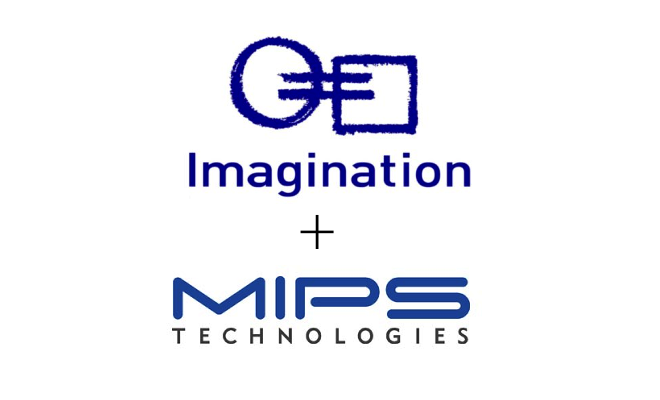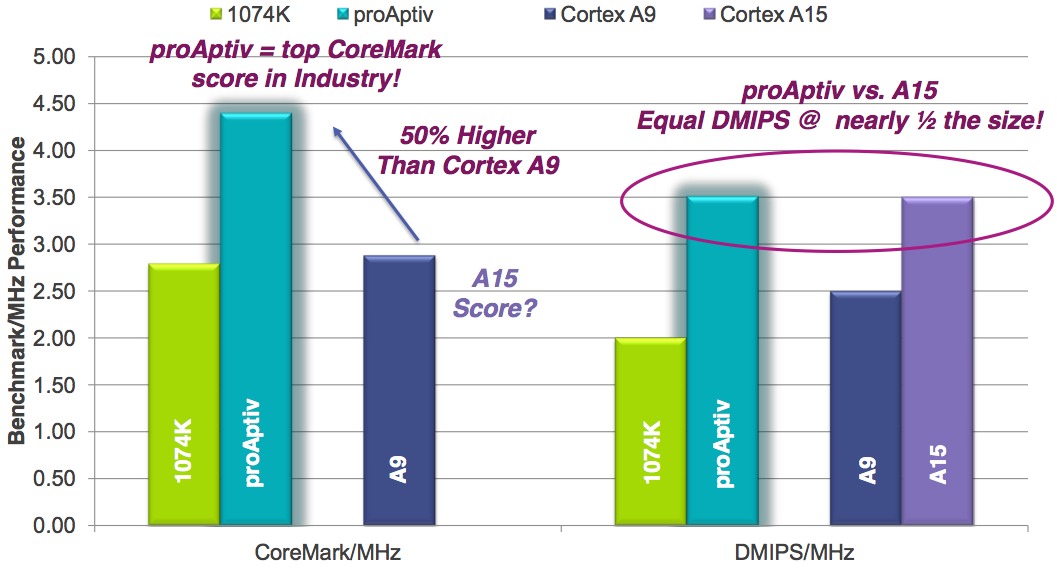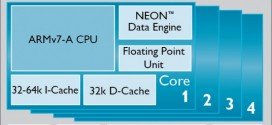Imagination has announced that it will release the “Warrior” MIPS-based CPU core later this year, with compatibility for both 32 and 64 bit. This isn’t as exciting as it may sound, however, because it seems like a refreshed proAptiv core line that’s meant to go out under the Imagination name.
Here are its main features:
- The proAptiv family comes in configurations from single through to six-core versions with optional hardware floating point.
- The interAptiv family includes hardware multi-threading and now comes in single-, dual- and quad-core configurations with optional floating point. The new single-core version of interAptiv removes the extra logic associated with multi-core coherency and L2 cache controller, providing a highly-efficient, multi-threaded single-core processor.
- The microAptiv family is available in versions targeting microcontrollers and deeply embedded processors, and now incorporates an optional hardware floating point unit for applications including electric metering and motor control.
I think making hardware floating point optional is a mistake, especially at this point in the life of mobile processors, who have become so powerful they can now run “full operating systems”, like Linux or Windows, and not just mobile operating systems like Android and iOS.
It’s good to see they include multi-core versions, because today it’s almost required you have at least a quad core chip for high-end, and even some lower end devices. These cores are so cheap, it’s worth it to have 4 of them, if for nothing else than better multi-tasking and task switching. It helps that these cores will also support multi-threading, something ARM chips do not, my guess is because the area added for multithreading is not worth the added performance.
For example, ARM prefers to use 4 cores, instead of 2 cores with multithreading. Yes, it costs more overall, but the performance is also significantly higher. Four threads is not anywhere close to 4 cores in performance. Plus, you get more value per buck with 4 cores instead of 4 threads.
So why is Imagination using its for its MIPS chips? Probably because the MIPS architecture is somewhat more efficient than the ARM architecture, and they can afford to lose a little efficiency and area space, for the extra performance.
The MIPS architecture has also supported 64 bit for a long time, as it’s been used in supercomputers, too. So they will get 64 bit in their chips ahead of ARM chips, and even ahead of Intel’s Silvermont chips, which should arrive on the market with 64 bit support around the same time as the ARM chips, next year.
But after all of this, this chips doesn’t seem like a very serious effort from Imagination to take over the mobile chip market, because it’s really not their work here. It’s what was already planned for release from MIPS, just under Imagination’s name. The fact that they haven’t even announced integration with their own GPU’s, let alone announced Imagination “APU’s” like I believe they will in the future, should be a tell.
I wouldn’t expect such Imagination APU’s with a true next-gen CPU core that has Imagination all over it, at least 2-3 years from now. These things take a lot of time. Until then I don’t expect Imagination to make a huge impact in the Android market. Don’t expect Apple to ever use their CPU cores, and if anything, they might even start making their own GPU’s in the future. If Imagination is lucky, they may get this new APU ready in time for Windows 9 release, and Windows 9 could work on x86, ARM and MIPS. But I wouldn’t hold my breath. Microsoft has enough problems and little success with ARM chips as it is.
At least on Android, MIPS chips can be easily supported just like the other 2 architectures, and they will get (almost) full app compatibility. So for now, I expect Imagination to try and push its MIPS CPU cores to every single one of their GPU clients (which are quite a few), but as I said, I’m not expecting them to be very interested in it, until Imagination manages to make an APU/SoC with their own GPU integrated in it, and then push it to customers the same way Intel is doing it to laptop manufacturers.
 TechDomino
TechDomino




